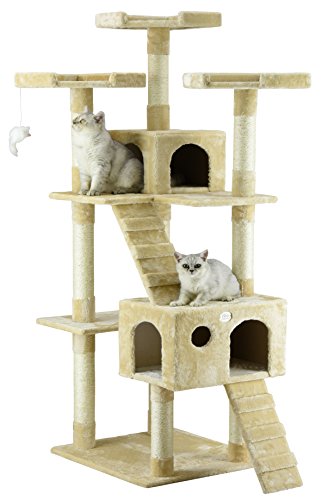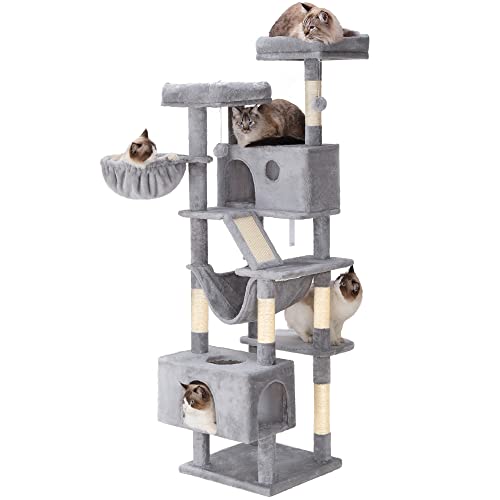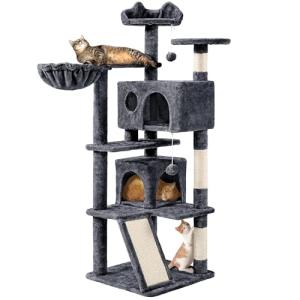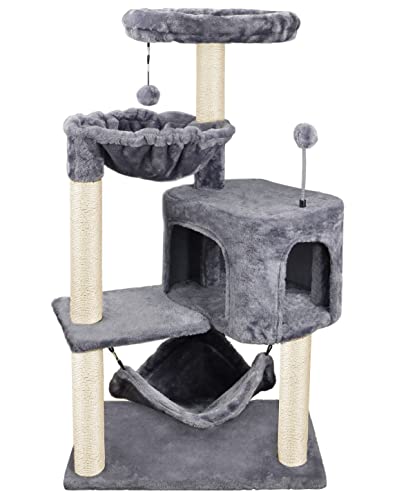Imagine the unsettling scenario: your cat, usually a picture of graceful agility, suddenly cries out in pain, or you find them in a situation that is clearly not right – perhaps they’ve had a mishap exploring, or something unexpected has occurred at home. In those heart-stopping moments, with the veterinary clinic potentially miles away, your calm and prepared response can become your cat's lifeline. Knowing basic feline first aid is not just a ‘nice to have’ skill for a cat owner; it’s a vital component of responsible pet ownership. Cats, by their very nature, are curious and sometimes clumsy creatures. Their explorations, while endearing, can lead to accidents. Furthermore, sudden illnesses can strike unexpectedly. Being equipped with first aid knowledge empowers you to provide immediate assistance, bridging the gap between the emergency and professional veterinary care. Remember, first aid is not about replacing your veterinarian. It's about providing crucial stabilization and temporary care in those critical moments before you can reach professional veterinary help. Think of it as the essential first step in ensuring the best possible outcome for your beloved feline companion. This article is your comprehensive guide to navigating the world of feline first aid. We'll start by showing you how to assemble a vital first aid kit, ensuring you have the essential tools readily available. We’ll then delve into the crucial aspects of safe handling techniques, recognizing that even the gentlest cat may react defensively when injured or frightened. We’ll equip you to recognize the tell-tale signs of a true feline emergency, those ‘red flag’ situations where every second counts. Finally, and most importantly, we'll walk you through step-by-step essential first aid techniques, providing practical guidance that could make all the difference in a stressful situation.
In an emergency, time is often of the essence. Fumbling around searching for bandages, antiseptic, or vital phone numbers only adds to the stress and wastes precious moments. This is why assembling a dedicated feline first aid kit is not just a good idea – it’s a critical component of responsible pet preparedness. Having a pre-assembled kit ensures that everything you need is readily at your fingertips, minimizing panic and maximizing your ability to respond quickly and effectively when your cat needs you most. What exactly should you include in this essential kit? Let’s break down the core supplies, categorizing them for clarity and ease of use. For wound care, you’ll want a selection of sterile gauze pads in various sizes. These are indispensable for applying pressure to bleeding wounds and for cleaning and dressing injuries. Medical tape, preferably hypoallergenic and self-adhesive, is crucial for securing bandages in place. Antiseptic wipes or solution are vital for cleaning wounds and preventing infection. Chlorhexidine or diluted povidone-iodine solutions are excellent choices, but always ensure you dilute them according to instructions – never use full-strength solutions on open wounds. A veterinary-approved antibiotic ointment can be applied to minor wounds after cleaning to further prevent infection and promote healing. Blunt-tipped scissors are essential for safely cutting bandages to size and for trimming fur around wounds if necessary, improving visibility and cleanliness. Tweezers are invaluable for removing splinters, thorns, or other debris from minor wounds. Cotton balls or swabs are useful for applying antiseptic and cleaning small areas. Finally, sterile saline solution is essential for flushing wounds clean of debris and contaminants.
For bandaging and providing support, self-adhering bandage wrap, such as Vetwrap or Coban, is a must-have. This type of bandage sticks to itself but not excessively to fur, making it ideal for securing dressings and providing support without being overly adhesive. Elastic bandages, like Ace bandages, can be used for creating more compressive bandages for sprains or strains, but remember to apply them carefully, ensuring they are snug but not too tight to cut off circulation. Tongue depressors or even popsicle sticks can be repurposed as splints for temporary support of limb injuries until you can reach a veterinarian. For medication and oral administration – though remember, administering medications without veterinary direction is generally not recommended in first aid scenarios unless explicitly instructed – a small tube of petroleum jelly is useful for lubricating a rectal thermometer if you need to take your cat's temperature (though this is usually best left to veterinary professionals). An oral syringe or dropper can be helpful for administering medications or fluids if specifically instructed to do so by a veterinarian over the phone. However, it's crucial to reiterate that you should only administer substances orally in a first aid context if directed by a vet.
Safety and restraint items are equally important for both your safety and your cat’s well-being during first aid. A sturdy cat carrier is non-negotiable. It’s not just for vet visits; in an emergency, a carrier is the safest way to transport an injured or distressed cat to the veterinary clinic. A thick towel or blanket serves multiple purposes. It can be used for gently restraining a cat for first aid procedures, providing warmth to a cat in shock or hypothermia, or offering a comfortable surface inside the carrier. A soft fabric muzzle or even an improvised muzzle (using a soft bandage or strip of cloth – learn how to do this safely beforehand) can be necessary in situations where a cat is in extreme pain or distress and poses a bite risk. However, muzzles should be used cautiously and only when absolutely necessary to ensure your safety while administering essential first aid. Never muzzle a cat who is having breathing difficulties, is vomiting, or is likely to vomit. Always prioritize your cat’s well-being and avoid causing further distress if possible. Non-latex gloves are essential for maintaining hygiene and protecting yourself from potential contaminants when dealing with wounds or bodily fluids.
Finally, no first aid kit is complete without essential information and documentation. Keep your regular veterinarian's contact information readily accessible, along with the phone number for a local emergency veterinary clinic and a pet poison control hotline. A written list of your cat's medications and any known allergies is crucial information for emergency veterinary staff. If you have a copy of your cat’s vaccination records, include a copy in the kit as this can be helpful for emergency veterinarians to quickly assess your cat's health history. Consider including a pocket-sized pet first aid manual or print out helpful resources from reputable online sources and keep them in your kit for quick reference. Once you’ve assembled your comprehensive feline first aid kit, proper storage and maintenance are key. Choose a durable, easily accessible container such as a plastic storage box, a tackle box, or a dedicated first aid bag. Store the kit in a known, easily accessible location in your home – somewhere that everyone in the household knows and can reach quickly in an emergency. Regularly check your kit, ideally every few months, to replenish used supplies and check expiration dates on medications and antiseptic solutions, ensuring your kit is always ready when you need it most.
When faced with an injured or distressed cat, it’s natural to feel panicked. However, maintaining your composure and understanding how to safely approach and handle your cat is paramount. Even the most affectionate and docile cat can react defensively when injured, scared, or in pain. Stress-induced aggression is a natural protective mechanism for cats in distress. It's essential to understand that if your cat bites or scratches during a first aid situation, it's not because they're being "bad" or uncooperative – it's a sign of pain, fear, and vulnerability. Avoid interpreting defensive behavior as intentional aggression; instead, recognize it as a cry for help and a signal to proceed with extra caution. When approaching an injured cat, always speak calmly and softly. Sudden loud noises or frantic movements will only increase their anxiety and potentially trigger a defensive reaction. Approach slowly and cautiously, allowing the cat to see you and understand your intentions are to help. Observe your cat’s body language carefully for signs of distress or aggression before you attempt to touch them. Hissing, growling, flattened ears, dilated pupils, a tense body posture, or a twitching tail are all warning signals to proceed with extreme caution or consider seeking professional assistance if you cannot safely approach.
When restraint is necessary for administering first aid, always aim to use the least amount of restraint required to safely and effectively provide care. The towel wrap, often referred to as the “kitty burrito,” is a versatile and often effective gentle restraint technique. To perform a towel wrap, lay a large towel flat. Gently place your cat in the center of the towel, positioning them lengthwise along the center. Bring one side of the towel snugly over their neck and front legs, tucking it underneath their body. Then, bring the other side of the towel across, wrapping it securely around their body, again tucking it underneath. The goal is to create a snug but not overly tight wrap that restricts their limb movement while still allowing access to the area you need to treat. Whenever possible, consider performing first aid while your cat is still inside their carrier. This provides a degree of containment and can minimize escape attempts and further injury. You can often reach through the carrier door or top opening to administer first aid to certain areas while the carrier provides a degree of safe confinement. Muzzling should be considered as a last resort, only when absolutely necessary for your safety and when you cannot safely proceed without it. If muzzling is required, use a soft fabric muzzle designed for cats or improvise one carefully with a soft bandage strip or cloth. Ensure the muzzle is applied correctly and allows the cat to breathe and pant freely. Never leave a muzzled cat unattended and remove the muzzle as soon as it is safe to do so. Importantly, never muzzle a cat who is struggling to breathe, is vomiting, or is likely to vomit.
In many stressful first aid situations, having a second person to assist with restraint while you administer first aid can be invaluable. If possible, enlist the help of another calm adult to gently hold and stabilize your cat while you focus on providing care. Finally, it’s critical to remember that your safety is also paramount. While your instinct is to help your cat, avoid putting yourself in a position where you are likely to be seriously bitten or scratched. If you cannot safely handle your injured cat, even with gentle restraint techniques, do not hesitate to seek immediate professional help. Call your veterinarian or emergency clinic and explain the situation. They can provide guidance over the phone and may advise you to bring your cat in immediately for safe and professional handling and treatment.
Recognizing a true feline emergency is crucial because in these situations, every second truly counts. Being able to quickly identify “red flag” signs can be the difference between a positive outcome and a tragic one. Respiratory distress is a top-tier emergency sign. Difficulty breathing, labored breathing (visible effort to inhale and exhale), rapid breathing, panting (which is unusual for cats unless they are extremely stressed or overheated), or if their gums or tongue appear bluish (cyanosis), all indicate a critical respiratory issue requiring immediate veterinary intervention. Severe bleeding that is uncontrolled, spurting blood, or deep wounds that continue to bleed profusely despite direct pressure are also red flags. Loss of consciousness or unresponsiveness, progressing lethargy that leads to your cat becoming unresponsive, or collapse are all critical signs that demand immediate veterinary attention. Seizures, characterized by convulsions, tremors, and loss of bodily control, are neurological emergencies. Suspected poisoning, where you know or suspect your cat has ingested a toxic substance, or if they exhibit signs like drooling, vomiting, tremors, seizures, or unusual behavior after potential exposure, requires immediate action. Trauma, such as being hit by a car, falling from a significant height, or sustaining a severe injury, clearly necessitates emergency veterinary care. Eye injuries, especially penetrating injuries to the eye or sudden swelling and discharge, are also considered emergencies. Straining to urinate or defecate, particularly in male cats, is a very serious sign potentially indicating a urinary blockage, a life-threatening emergency, especially in males. Severe or persistent vomiting or diarrhea, especially if accompanied by blood, lethargy, or signs of dehydration, can also become emergency situations. Sudden paralysis or weakness, such as an inability to move limbs or loss of balance, are neurological signs requiring prompt veterinary assessment. Extreme pain or agitation, restlessness, excessive vocalization, or an inability to get comfortable can indicate severe underlying issues. Finally, signs of heatstroke or hypothermia, depending on the environmental temperature, are also emergencies.
In contrast to these “red flags,” there are “yellow flag” situations that require prompt veterinary attention, but perhaps not with the same immediate, life-or-death urgency of a true emergency. Minor wounds, such as superficial cuts and lacerations, still require veterinary assessment to prevent infection and ensure proper healing, but you may have a slightly longer window to seek care. Limping or lameness, while not immediately life-threatening, warrants a veterinary check-up to diagnose the cause and provide appropriate pain relief and treatment. Mild vomiting or diarrhea, if not worsening and not accompanied by other concerning signs like lethargy or blood, can be monitored initially, but if they persist or worsen, veterinary attention is needed. Changes in appetite or water intake, if significant or prolonged, should be investigated by a veterinarian. Eye or ear discharge, while not usually emergencies, require veterinary diagnosis and treatment to resolve underlying infections or issues. Skin irritations or allergies, while often uncomfortable, also fall into the “yellow flag” category, needing veterinary attention but not typically requiring an emergency visit unless they are severe or accompanied by other systemic signs. Distinguishing between these “red” and “yellow flag” situations is crucial for prioritizing care and seeking the appropriate level of veterinary attention in a timely manner.
When faced with a bleeding wound on your cat, controlling the bleeding is the immediate first priority. Apply direct pressure to the wound using a sterile gauze pad. Press firmly and steadily, without lifting, for at least a few minutes, or until the bleeding slows or stops. If possible, elevate the injured limb above the heart to help reduce blood flow to the area. Tourniquets should only be considered in extreme, life-threatening situations where bleeding is profuse and uncontrollable by direct pressure and elevation, and only if you are in a truly remote location with absolutely no immediate access to veterinary care and have been instructed by a vet (even remotely over the phone) or have had specific training in their safe application. Improper tourniquet use can cause severe tissue damage, so they are generally not recommended for typical first aid scenarios. For minor wounds, once bleeding is controlled, you can proceed with wound care while awaiting veterinary attention. Clean the wound gently by flushing it with sterile saline solution to remove debris. If you have a diluted antiseptic solution like chlorhexidine or povidone-iodine, you can use this diluted solution to further cleanse the area, but avoid using full-strength antiseptic solutions as they can be damaging to tissues. Apply a thin layer of veterinary-approved antibiotic ointment to the cleaned wound. If necessary, and if the wound is in a location that is likely to get dirty or be further irritated by your cat, you can apply a loose, protective bandage.
For minor burns or scalds, the immediate action is to cool the burn area. Apply cool (not ice-cold) water to the burn immediately for several minutes to help reduce tissue damage. Follow this with cool, wet compresses applied to the burn area. Protect the burn by covering it loosely with a sterile bandage to keep it clean while you seek veterinary care. Remember that all but the most superficial, tiny burns require veterinary assessment. If your cat is choking, recognize the signs: coughing, gagging, pawing at their mouth, and difficulty breathing. If you suspect choking, and if you are trained, you can attempt a modified Heimlich maneuver for cats. Hold your cat upright, with their back against your chest. Locate the soft spot just below the ribs. Give a sharp, upward thrust to the abdomen, repeating a few times if necessary. You can also try a finger sweep to remove the object, but only if you can clearly see the object in the mouth and it is easily accessible and removable with your finger. Be extremely cautious to avoid pushing the object further down the airway.
For heatstroke, immediate cooling is critical. Recognize the signs: panting, excessive drooling, lethargy, weakness, collapse, and elevated body temperature. Move your cat to a cool, shaded area immediately. Begin cooling methods by applying cool (not ice-cold) water to their paws, ears, and groin area. You can also use a fan to help dissipate heat and apply cool, wet cloths to their body. Never use ice baths as they can cause shock. Offer small amounts of cool water to drink if your cat is conscious and able to swallow. Immediate veterinary care is essential for heatstroke. For hypothermia due to cold exposure, recognize signs such as shivering, lethargy, weakness, slow breathing, and if they feel cold to the touch. Move your cat to a warm place indoors. Wrap them in warm blankets and provide gentle external heat using a warm water bottle wrapped in a towel – avoid direct heat sources that could cause burns. If your cat is conscious and able to swallow, offer them warm, sweet fluids like honey water or sugar water to provide energy (confirm with your vet later if your cat has any diabetic risk). Veterinary care is also essential for hypothermia.
In cases of suspected poisoning, try to identify the potential poison if possible and bring any packaging or labels to the veterinarian. Do not induce vomiting in cats unless specifically instructed to do so by a veterinarian or pet poison control, as inducing vomiting can sometimes be harmful depending on the substance ingested. Contact Pet Poison Helpline or your veterinarian immediately for guidance. Transport your cat and any suspected substance packaging to the veterinary clinic immediately. When transporting an injured cat, always use a cat carrier, even if your cat dislikes it. A carrier provides the safest and most secure method of transport, preventing escape and further injury. Handle your cat gently to avoid exacerbating any injuries. Keep them warm and as comfortable as possible during transport, and call ahead to the veterinary clinic to inform them that you are en route with an emergency so they can prepare for your arrival.
Prevention is always better than cure. Creating a safe home environment significantly reduces the need for first aid situations. Secure toxic substances, cleaning supplies, medications, and chemicals out of reach. Hide electrical cords to prevent chewing and electrocution. Ensure window and balcony safety to prevent falls. Choose safe, non-toxic houseplants and remove any poisonous plants from your home and garden. Secure small objects that could be swallowed, such as string, yarn, rubber bands, and small toys. Regular veterinary check-ups are crucial for preventative care. Annual or bi-annual wellness exams allow your veterinarian to detect potential health issues early. Keep up-to-date on vaccinations and parasite prevention. Knowing your cat's baseline normal behavior, eating habits, and even their resting breathing rate and pulse (under veterinary guidance on how to check these) makes it much easier to recognize when something is amiss and react promptly.
Equipping yourself with feline first aid knowledge and assembling a well-stocked kit is an act of love and responsible pet ownership. While first aid is not a substitute for veterinary care, it provides invaluable tools to stabilize your cat and provide essential temporary care in emergency situations, potentially improving outcomes and even saving lives. Take the time now to create your feline first aid kit and familiarize yourself with these essential tips and techniques. Being prepared could make all the difference in an emergency and allow you to be the first line of defense, providing the best possible care and increasing the chances of a positive outcome for your beloved feline companion. Empower yourself through preparedness, and rest assured that you can face unexpected situations with confidence and provide crucial assistance when your cat needs you most.







